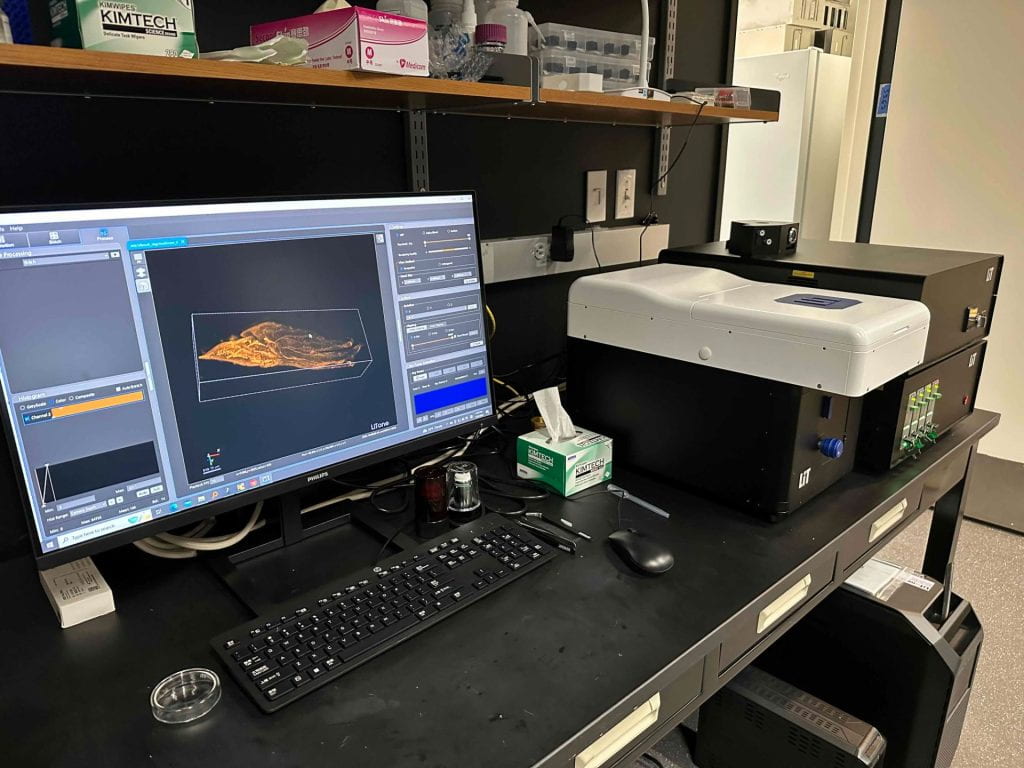
The LiTone XL light-sheet microscope system is designed to provide fast volume imaging of large samples at micron-scale resolution. Its features and capabilities make it useful for a variety of applications in both life sciences and materials research.
Key features of the LiTone XL light-sheet microscope include:
- Line Bessel Sheet (LBS) technology: This illumination technique enables the microscope to have high axial resolution and a wide field of view, resulting in superior image quality and reduced phototoxicity.
- 4-side illumination configuration: The microscope’s illumination design ensures the most uniform sample illumination available in the market, enhancing image quality and reducing artifacts.
- Refractive index (RI) correction optics: Adjustable from 1.33 to 1.57, these optics ensure optimal imaging quality in various immersion media, allowing for greater flexibility in sample preparation.
- Large sample chamber: The exchangeable sample chamber can accommodate samples with sizes over 2cm in X and Y and 1 cm in Z.
- Multi-position scan function: This feature enables the imaging of large quantities of living transparent samples, such as zebrafish or drosophila embryos.
Examples
- Imaging of large cleared tissue or organ samples: The microscope is capable of producing high-resolution 3D images of large samples (up to 2 x 2 x 1 cubic cm).
- Imaging of living transparent samples: The LiTone XL’s multi-position scan function allows for the rapid and efficient imaging of large quantities of living transparent samples, such as zebrafish or drosophila embryos.
- Materials research: The microscope’s high resolution and large sample chamber make it suitable for the study of various materials, including polymers, ceramics, and composites, providing insights into their structure and properties.
Advantages
- Fast and efficient imaging: The microscope’s multi-position scan function enables the rapid and efficient imaging of large quantities of living transparent samples, with a temporal resolution of 2 Hz per channel for a 3D volume of 30 μm X 30 μm X 30 μm.
- Uniform sample illumination: The LiTone XL’s unique 4-side illumination configuration enables uniform sample illumination, enhancing image quality and reducing artifacts.
- Adaptable to various immersion media: The microscope’s adjustable refractive index (RI) correction optics (from 1.33 to 1.57) allow for optimal imaging quality in various immersion media, making it suitable for a wide range of applications.
Disadvantages
- Potential for phototoxicity: Although the LiTone XL system is designed to minimize phototoxicity through its light-sheet technology, there is still a risk of phototoxicity and photobleaching, especially with sensitive samples or prolonged exposure.